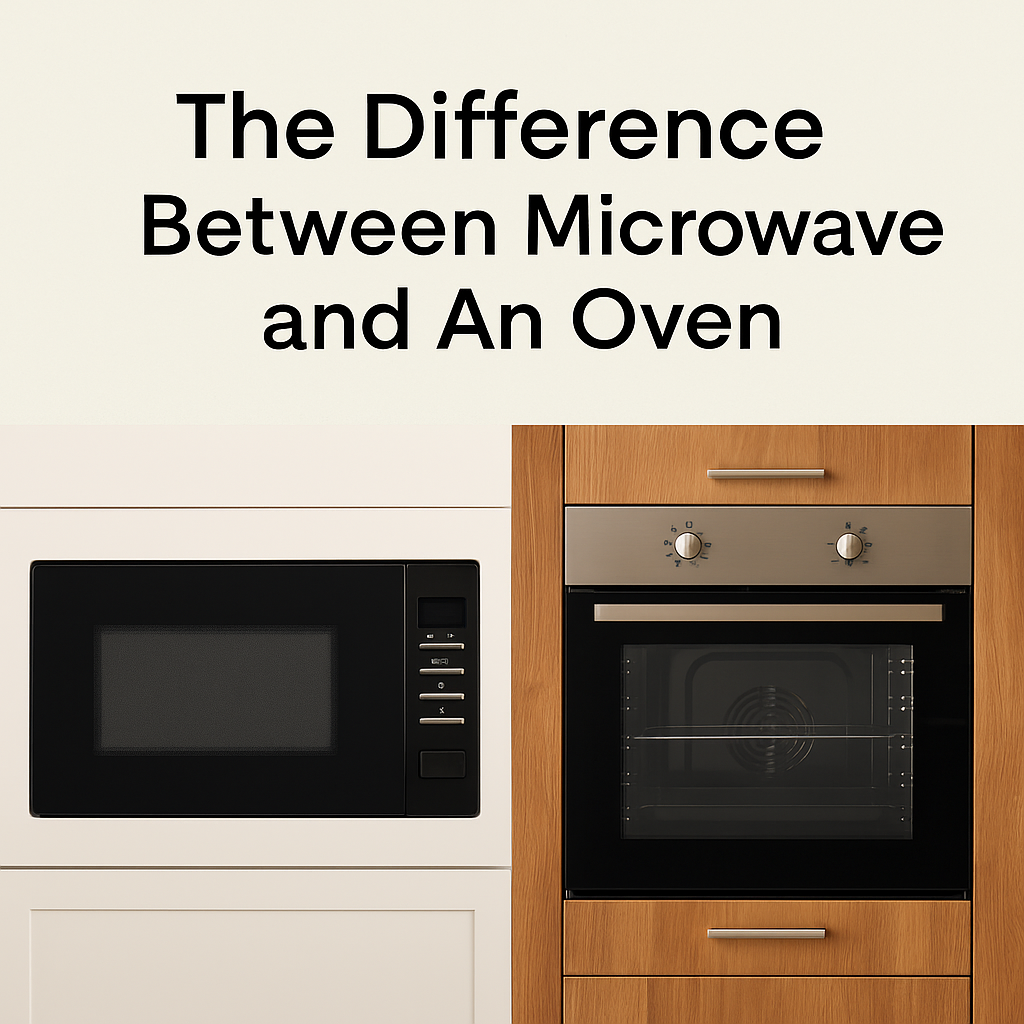
The Difference Between Microwave and An Oven
Choosing the right appliance for your kitchen can be tricky. Microwaves and ovens are both common, but they work differently and are suited for different types of cooking. Understanding how each functions, what they do best, and when to use them can make cooking easier and faster.
How Microwaves Cook Food
Microwaves use electromagnetic waves that make water molecules in the food vibrate. This creates heat inside the food, cooking it from the inside out. That is why they can heat food so quickly. A frozen meal can go from fridge to plate in minutes, which is something ovens can’t do as fast.
They are also very convenient. You can reheat leftovers, defrost frozen meat, or even steam vegetables without adding extra oil. Microwaves are efficient with energy because they heat food directly rather than heating the entire cooking chamber.
Some people don’t realize that microwaves can unevenly heat food if it’s dense or stacked. Stirring or rotating plates helps prevent cold spots. You can also use microwave-safe covers to trap steam and cook food more evenly.
How Ovens Cook Food
Ovens use hot air to cook food gradually. Heat surrounds the food and penetrates it slowly. This allows for more control over texture and flavor. Baking bread, roasting chicken, or cooking casseroles relies on this slow heat.
Ovens are what give foods a crisp, golden exterior. When cooking a roast, the meat browns outside while staying tender inside. Cookies rise and brown evenly, and vegetables caramelize naturally. That is something microwaves can’t replicate because they don’t produce that kind of surface heat.
Ovens take longer to cook food. Preheating is needed for even results, which can take 10-15 minutes. Cooking times are longer than a microwave, but the flavor and texture you get often justify the wait.
Cooking Speed and Energy Use
One of the main differences between microwave and oven use is speed. Microwaves save time, making them perfect for quick meals or snacks. They also use less electricity for small portions since they heat food directly.
Ovens are slower but better for recipes that need even heat over time. They use more electricity because the chamber and heating elements stay on longer. However, they allow cooking large quantities at once, which a microwave cannot handle efficiently.
Texture and Flavor Differences
Microwaves cook fast but don’t change the food’s surface. Bread won’t get crispy, and fried items won’t stay crunchy. This is why microwaves are better for soft foods like soups, rice, or reheated leftovers.
Ovens develop flavor through heat reactions in the food. Roasted meat, baked desserts, and caramelized vegetables get deeper flavors and textures. Slow cooking allows sugars and proteins in food to react, which adds taste complexity that microwaves cannot create.
Types of Food Suited for Each Appliance
Microwaves work best for meals that need heat quickly. Reheating pasta, rice, or cooked vegetables is fast and simple. Defrosting frozen meat or cooking pre-packaged meals also fits perfectly.
Ovens are suitable for anything that requires a crisp surface, browning, or long cooking times. Baking cakes, making pizza, roasting chicken, or cooking casseroles is best done in an oven. Some microwaves have grill or convection options, but they are still limited in creating the texture and flavor that an oven produces naturally.
Size, Placement, and Convenience
Microwaves are compact and fit easily on countertops or small kitchen spaces. They are simple to install and move. Ovens are larger and usually built into the kitchen or freestanding, which takes more space.
Choosing between the two depends on your cooking habits and kitchen size. For a small apartment or quick meals, a microwave is ideal. For home cooks who bake, roast, or cook elaborate meals, an oven is worth the space.
Cleaning and Maintenance
Microwaves are easier to clean because the inside is smooth and spills can be wiped quickly. Some models even have steam-cleaning options.
Ovens require more effort. Baked-on grease and food particles need scrubbing or a self-cleaning cycle. Even though ovens take more time to clean, regular maintenance keeps them efficient and prolongs their lifespan.
Combining Microwaves and Ovens
Many households benefit from having both appliances. A microwave is convenient for daily meals, snacks, and reheating, while an oven is for cooking dishes that need texture and flavor. Some kitchens even have combination microwave-oven units, which allow both fast heating and baking options.
Understanding the difference between microwave and oven can improve meal planning. Knowing when to use each can save time, energy, and help produce the best results for different recipes.
Choosing the Right Appliance for Your Kitchen
Microwaves are ideal for speed, reheating, and small meals. Ovens are better for cooking larger meals, baking, roasting, and achieving textures and flavors that microwaves cannot.
BTCS Hardware offers a wide selection of both microwaves and ovens. Whether you need quick, everyday convenience or want to cook meals with rich flavors and textures, we have appliances to match every kitchen need. Check out our collection and upgrade your cooking experience today.